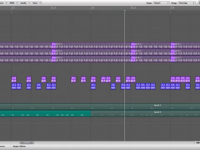This creative tribute coverage documents a unique musical homage to Steve Jobs created entirely from iPhone system sounds, representing the immediate outpouring of artistic expression that followed the Apple co-founder's death in October 2011. Patrick Bisch examines the innovative YouTube creation by WhitakerBlackall that used only three distinctive iPhone audio elements - the email notification "ding," the email "send" sound, and the iconic message tone "doo-dah-dah" - to compose a complete musical piece. The tribute reflects the deep cultural connection users developed with Apple's carefully designed interface sounds that became part of daily digital life.
The artistic innovation analysis covers the minimalist approach of constructing complex musical arrangements from limited audio sources, demonstrating the musicality inherent in Apple's interface design philosophy. The creator's technical achievement in layering and arranging these familiar system sounds into a coherent musical tribute showcases the creative potential hidden within everyday technology experiences. The progression from slow beginning to more complex arrangements mirrors the evolution of Apple's technology and Steve Jobs' impact on digital culture.
The cultural significance evaluation addresses the broader phenomenon of grassroots digital tributes that emerged across social media platforms following Jobs' passing, reflecting his unique position as both technology innovator and cultural icon. The choice to use iPhone sounds specifically acknowledges the intimate relationship users developed with these audio cues that provided emotional connection to technology through carefully crafted sensory experiences. The Reddit origin and YouTube distribution show the viral nature of creative content that resonated with the technology community's desire to honor Jobs through the products he inspired.
This musical tribute coverage captures the spontaneous creative expression that characterizes digital culture's response to important cultural moments, demonstrating how users repurpose technology elements for artistic and commemorative purposes. Looking back 13+ years later, this iPhone sound composition represents an early example of found-sound digital art that anticipated modern creative trends where everyday technology elements become source material for artistic expression. The interface sound focus proved prescient as audio design became increasingly sophisticated across digital platforms, with companies investing heavily in signature sounds that build brand recognition and emotional connection. While the specific iPhone sounds referenced here have evolved with iOS updates, the underlying principle of meaningful audio design continues influencing user experience across all technology platforms. The grassroots tribute phenomenon documented here established patterns for how online communities commemorate cultural figures through creative remixing and artistic recontextualization of familiar elements. The viral distribution through Reddit and YouTube reflects the decentralized nature of digital culture where single creators can achieve wide reach through community amplification rather than traditional media gatekeeping. This moment represents the peak period when interface sounds carried strong emotional resonance for users, before notification fatigue and audio customization reduced the universal recognition of default system sounds. The creative constraint of using only three sound elements shows artistic principles that continue influencing modern content creation where limitations often drive innovative expression rather than hindering creativity.
This summary was created by Dave Rogers. The original post was written by Patrick Bisch and published on October 1, 2011.
If you'd like to view the original post, you can find it here.
